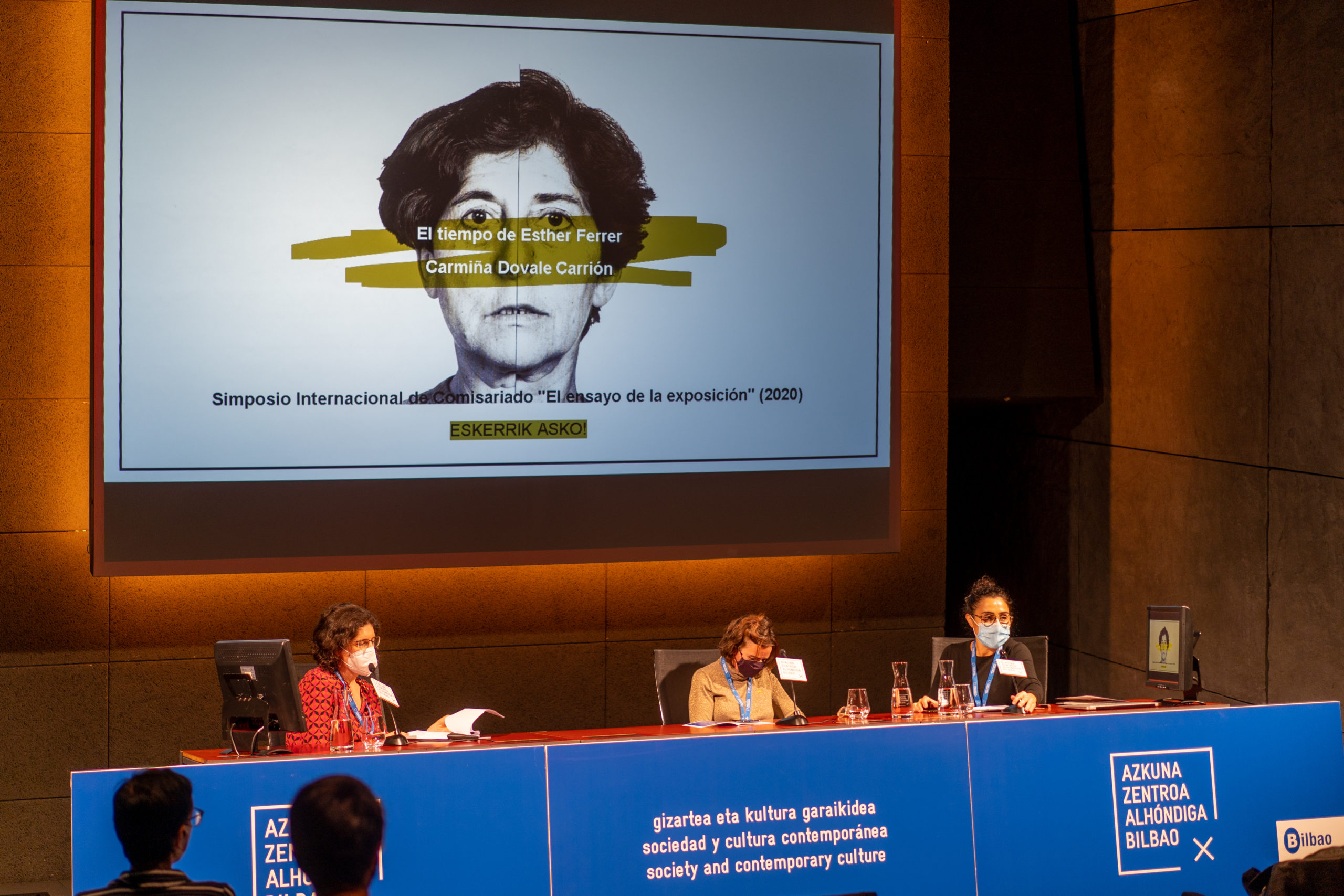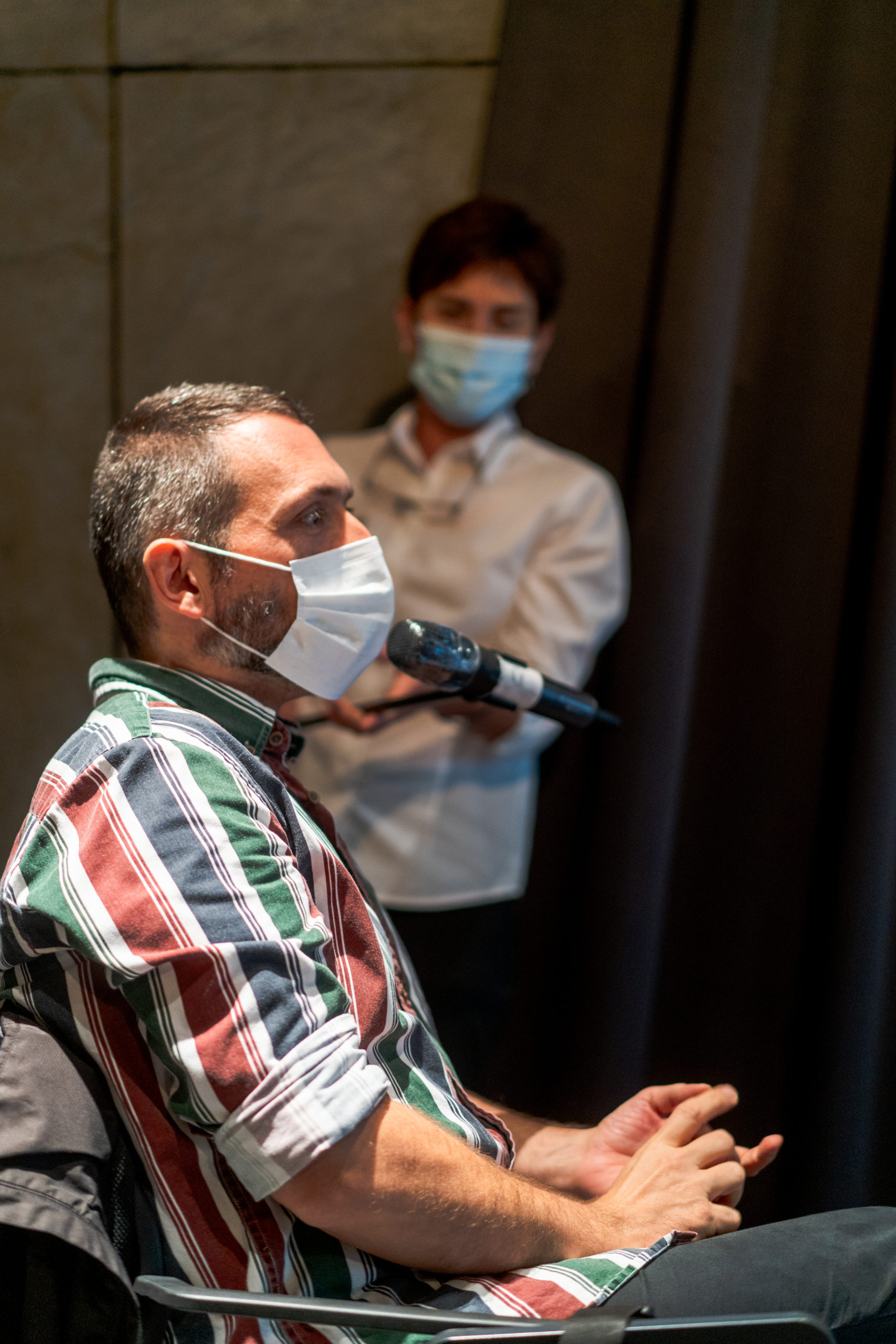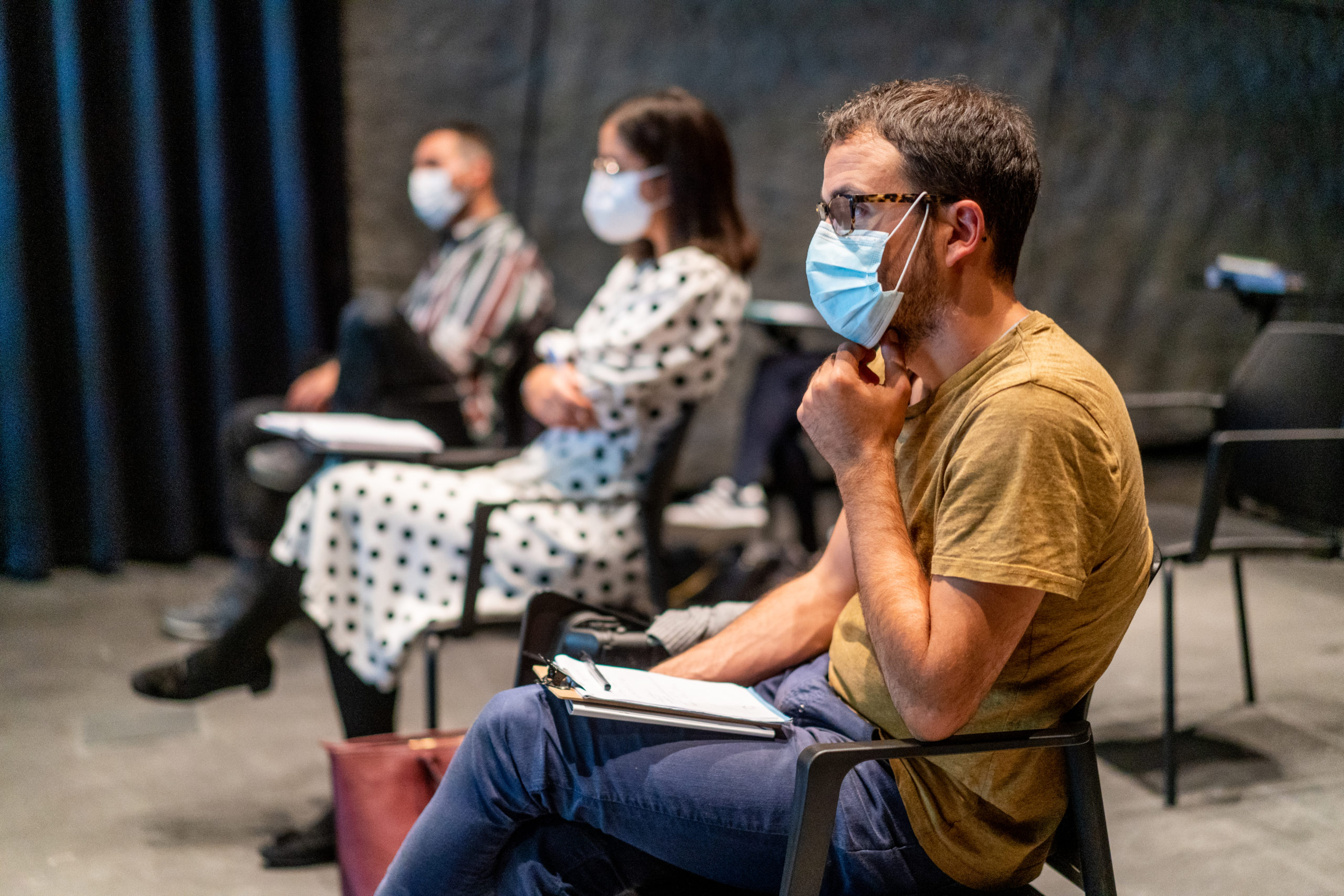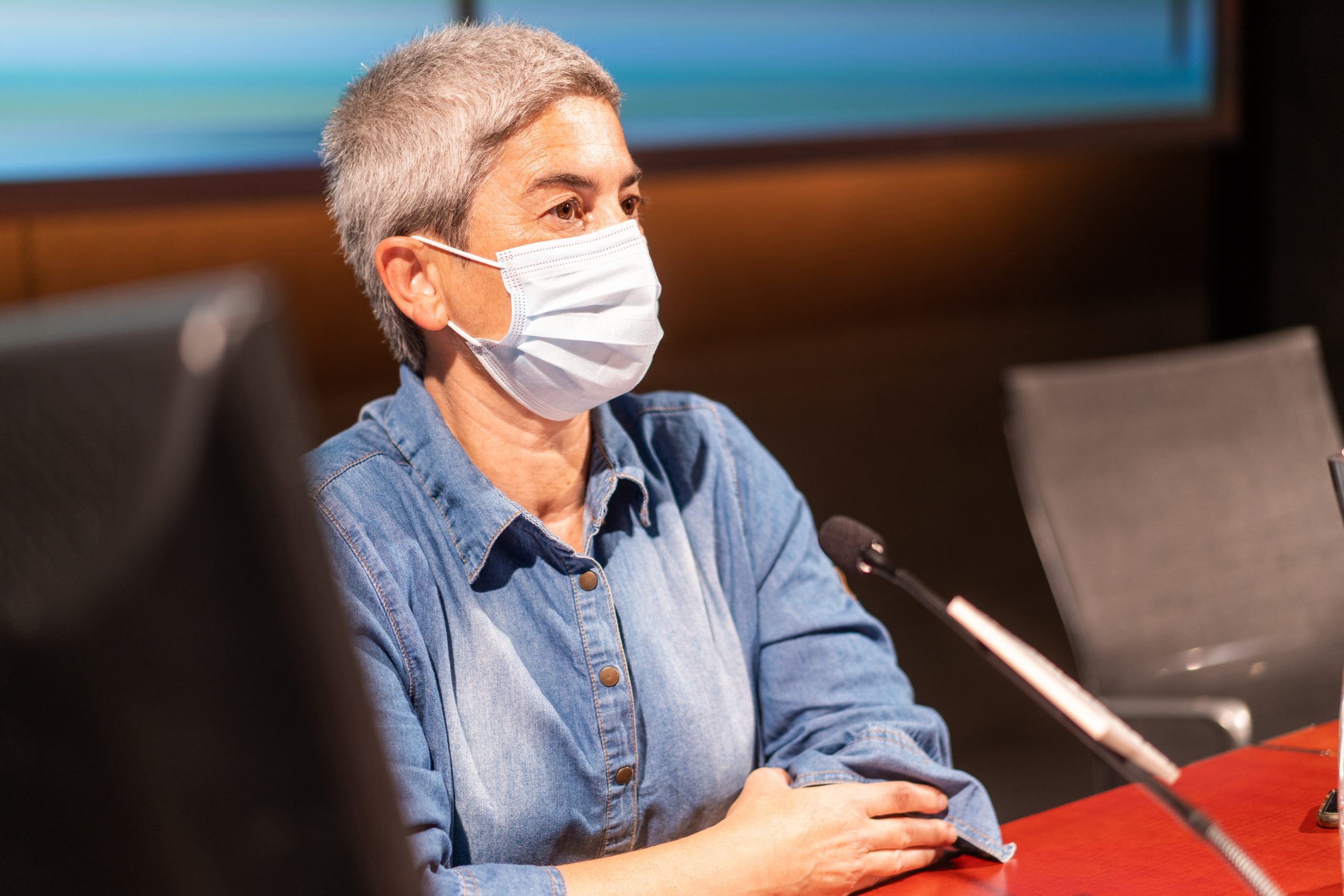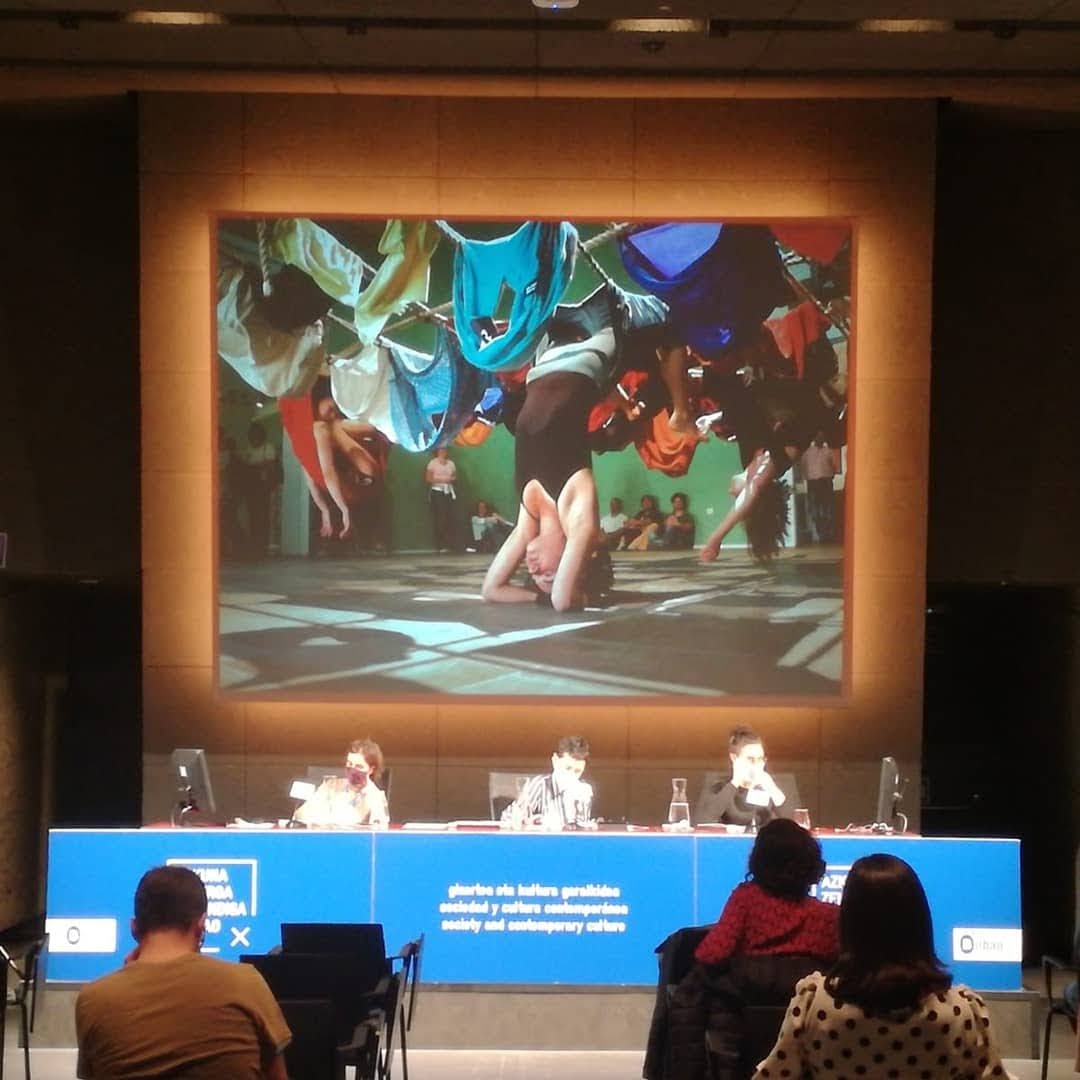The Papers of the Exhibition
4TH ENCOUNTER. THE PAPERS OF THE EXHIBITION (1997-2007). INTERNATIONAL CURATING SYMPOSIUM
by
21-22 October, 2020 at Azkuna Zentroa.
The Papers of the Exhibition (1977-2017) is a collaborative project between Bulegoa z/b and Azkuna Zentroa which aims to study certain exhibitions that took place between 1977 and 2017. To that end, different international encounters will take place, each one focused on a particular decade.
So far, three meetings have been held. The first one in 2016 in Prologue format, and the other two in 2017 and 2019, focused on the decades between 1977 and 1987 and between 1987 and 1997, respectively.
The next meeting will be held on 21 and 22 October 2020, in an online and in-person edition, where cases from the 1997-2007 decade will be studied.
In addition to the six guest talks, three communications will be presented. The symposium will be preceded by a workshop, in which materials relating to the symposium contents will be worked on. The workshop will take place on 6, 7, 13 and 14 October. Peio Aguirre will direct one of the sessions.
GUEST SPEAKERS: Ana Dević, Yaiza Hernández, Lisette Lagnado, Maria Lind, Ruth Noack, Azucena Vieites.
PAPERS: Ieva Astahovska, Carmiña Dovale Carrión, Jone Alaitz Uriarte.
3RD DECADE. 1997-2007
An exhibition is a set of objects assembled in a specific physical space. Anyone visiting the exhibition discovers shapes, artefacts which occupy the same space-time framework in which the visitor finds herself. This circumstance enables the viewer to walk and trace itineraries through the space, to access a direct, although mediated, encounter between her body and those objects. An exhibition is also a device which enables displays and overflows from that same given space-time framework.
The years encompassed by this fourth meeting coincide with the turning point in the development of digital technologies and the acceleration of globalisation processes, as well as their effects on the context of art. During this decade some exhibitions will put the potential of the exhibition device into practice. Held within the context of the New Normal, this fourth meeting presents some of those practical implementations as examples in which the exhibition is shown as a critical instrument, a discursive tool that intends to produce public space.
PROGRAMME*
Wednesday, 21 October, 2020
16:00. Introduction
16:30. Maria Lind. A Fiesta of Tough Choices.
17:30. Yaiza Hernández Velázquez. Heart of Darkness
18:30. Ana Dević: An Artist Who Cannot Speak English Is No Artist
19:30. Conversation
Thursday, 22 October, 2020
12:00-14:00. Papers:
Ieva Astahovska: Exhibitions in Central and Eastern Europe and their role in construction/deconstruction regional identities
Carmiña Dovale Carrión: El tiempo de Esther Ferrer
Jone Alaitz Uriarte: Radiodays. What Happens When Viewers Become Listeners?
16:00. Introduction
16:30. Ruth Noack. Woven Narratives – On documenta 12 and some of its interlacings
17:30. Azucena Vieites. Nineties low-fi artistic practices in the Basque Country
18:30. Lisette Lagnado: The São Paulo Biennale, between internalisation and discursive emancipation
19:30. Conversation
* Simultaneous translation into Basque, Spanish and English.
PRICES:
For information on prices, click here.
GUEST TALKS
Maria Lind. A Fiesta of Tough Choices
A Fiesta of Tough Choices was a festival-like exhibition and two seminars that took place in 2006 at the residency program Iaspis in Stockholm. Responding to the year of 2006 being proclaimed “the year of multiculture” by the government of Sweden, this elastic and cheeky project wanted to ask questions about post-colonialism, art and state structures. Co-curated by Tirdad Zolhgadr and Maria Lind, it neither stayed neatly within an exhibition format nor a classical symposium, but instead leaked across borders and categories. Looking back at A Fiesta of Tough Choices also means recognising how short memory can be and how fragile archives are, even if they are run by the state itself.
Yaiza Hernández Velázquez. Heart of Darkness
The exhibition Heart of Darkness opened at the Centro Atlántico de Arte Moderno in Las Palmas de Gran Canaria in 2004, the same year the European Border and Coast Guard Agency (Frontex) was set up and growing numbers of people began to attempt the crossing from continental Africa to the Canary Islands. The curatorial intent was to highlight the legacy of colonialism a hundred years after the publication of Joseph Conrad’s novel. Despite the fact that the exhibition had already been shown without incident at the Palau de la Virreina in Barcelona and that it was one of the most expensive and technically complex exhibitions CAAM had ever held, it was abruptly closed ahead of schedule, remaining open to the public for a mere 29 days. In this session, Yaiza Hernández Velázquez, who was then a curator at CAAM and produced the show, revisits this event making use of her (bad) memory, official archives, digital debris and private conversations. Through this exercise, she will attempt, among other things, to ask where the limits of an exhibition lie, what writing an exhibition’s history can mean and from where it is possible to do so.
Ana Dević: An Artist Who Cannot Speak English Is No Artist
Using iconic work by Croatian conceptual artist Mladen Stilinović (1947–2016) An Artist Who Cannot Speak English Is No Artist (1992) as a trigger for my presentation I will look back at some of the aspects of social and cultural processes in the past decades in the geopolitical context of so-called Eastern Europe and beyond. In a quite ironic manner, Stilinović’s work deals with the position of a cultural worker from Eastern Europe at the moment of its supposed re-integration into the ‘mainland’ of Western European democracy, and refers to the geopolitical reconfigurations during which culture has often been seen as a means of ‘introducing’ former socialist countries to the standards of Western liberal capitalism. Stilinović’s lifelong anti-systemic approach, his quiet but shrewd rebellion against social and artistic conventions, and his artistic practice inspired a generation of artists and curators worldwide, WHW included. The statement An Artist Who Cannot Speak English Is No Artist rings true well beyond the Eastern European context within which it was made, and draws attention to the complicated mechanisms of cultural integration and representation, and their relationship to curatorial responsibility and ethics. My presentation will touch upon these recurring topics of longue durée with a special emphasis on the questions of infrastructure, partisanship and collectivity, as well as process of production of critical knowledge through curating.
Ruth Noack: Woven Narratives – On documenta 12 and some of its interlacings
My lecture will attempt to use weaving as a means to recount how documenta 12 was put together. It will try to show how feminism informed its curatorial approach. And it will strive to show how we hoped to create a narrative texture that would allow viewers to weave in and out of the stories that were being told.
Azucena Vieites: Nineties low-fi artistic practices in the Basque Country
We tend to associate the term “low-fi”, through music, with a type of sound achieved by low fidelity recording equipment. Many artists have used low-fi resources because of their inexpensive, accessible nature, with the consideration that they also tend to produce more “authentic” results, or more direct, “real”, or “less highly produced”. Low-fi dynamics also allow a high level of autonomy in creative processes and more independence. “Low-fi” is linked to an attitude and philosophy that signify DIY culture. We will try to identify practices in the art world that might be located in the musical context, as well as their implications, their development in terms of techniques or ways of making, their genealogies and connections to feminist thinking and gender politics. Using images and texts, this intervention will take a look at the Basque art scene beginning in the early nineties. We will take a close look at the specific social, cultural and historical context and its precedents, as a relevant factor in the setting up of forms of production that characterise the generation of artists I am a part of.
Lisette Lagnado: The São Paulo Biennale, between internalisation and discursive emancipation
Since its creation in 1951, the São Paulo Biennale has positioned itself as the leading event of the Latin American continent within an ambitious plan for the modernisation of Brazil. With the inauguration of its new capital, Brasilia, in 1960, followed by a military coup in 1964, the cultural debate focused on the conflict between the national and the international, a conflict that was exacerbated by the position of the Centro Popular de Cultura (CPC), linked to the União Nacional dos Estudantes (UNE).
In the 1980s, Brazil embarked on its transition towards democracy, which ended with the fall of the Berlin Wall and the end of the Cold War. Until the late 1990s, the main critics and curators who participated in the reformulation of the São Paulo Biennale (Aracy Amaral, Walter Zanini, Sheila Leirner and Paulo Herkenhoff) proposed contradictory versions of the internationalisation project of Brazilian art.
In 2005, invited to vie for the position of curator of the 27th São Paulo Biennale, I presented a conceptual proposal inspired by Hélio Oiticica’s “Environmental Programme”, with the premise that the event should scrap the “official country delegations” model. The position of artist Hélio Oiticica (1937-1980) offered a fundamental counterpoint to the so-called “universal” art, by proposing an avant-garde (Brazilian) programme which incorporated different social dynamics taken from public demonstrations and the architecture of the “favela” slums, in particular, with Tropicália (1967). How did the Como Viver Junto (2006) biennale manage to undo a narrative subjected to the currents of hegemonic art and what were its limitations considering that decolonial perspectives and practices are still absent from art institutions? To what extent can events such as art biennales, which belong to the capitalist globalisation rationale, generate, in addition to well-intentioned platforms, ideological changes?
BIOGRAPHIES
Maria Lind is a curator, writer and educator based in Stockholm and Berlin. She is currently the councilor of culture at the embassy of Sweden, Moscow. She was the director of Stockholm’s Tensta konsthall 2011-18, the artistic director of the 11th Gwangju Biennale, the director of the graduate program, Center for Curatorial Studies, Bard College (2008-2010) and director of Iaspis in Stockholm (2005-2007). From 2002-2004 she was the director of Kunstverein München and in 1998, co-curator of Europe’s itinerant biennial, Manifesta 2 in Luxembourg. In 2015 she curated Future Light for the first Vienna Biennial, and in 2019 she co-curated the Art Encounters Biennial in Timisoara. She has taught widely since the early 1990s, including as professor of artistic research at the Art Academy in Oslo 2015-18. Currently she is a lecturer at Konstfack’s CuratorLab. She has contributed widely to newspapers, magazines, catalogues and other publications. She is the 2009 recipient of the Walter Hopps Award for Curatorial Achievement. In 2010 Selected Maria Lind Writing was published by Sternberg Press, and Seven Years: The Rematerialization Art from 2011 to 2017 appeared in the fall of 2019.
Yaiza Hernández Velázquez is a lecturer in the Visual Cultures department at Goldsmiths, London. Previously she worked for six years at Central Saint Martins where she led the MRes in Exhibition Studies. Before returning to academia, she worked for over a decade in art institutions, including as Head of Public Programmes at MACBA (Barcelona), director of CENDEAC (Murcia) and curator at CAAM (Las Palmas de Gran Canaria). Recent publications include “Imagining Curatorial Practice after 1972” in Curating after the Global (MIT Press, 2019), “Cortocircuitos del museo y la autonomía” in ¡Autonomización! ¡Autonomía! (TEA, 2019) and “Who Needs Exhibition Studies?” in El Museo Foro (UNAM, 2019).
Ana Dević is a curator based in Zagreb. She is a member of curatorial collective What, How and for Whom/WHW formed in 1999 and based in Zagreb, Vienna and Berlin. Its members are Ivet Ćurlin, Ana Dević, Nataša Ilić and Sabina Sabolović, and designer and publicist Dejan Kršić. Since 2003 WHW collective has been running the program of Gallery Nova, a city-owned gallery in Zagreb. WHW launched in 2018 a new international study program for emerging artists WHW Akademija based in Zagreb. In 2019 members of WHW Ivet Ćurlin, Nataša Ilić and Sabina Sabolović were appointed as artistic directors of Kunsthalle Wien in Vienna, WHW collective activities continue in Zagreb led by Ana Dević.
With WHW she co-curated numerous exhibitions, such as: Collective Creativity, Kunsthalle Fridericianum, Kassel, 2005; What keeps mankind alive?; 11th Istanbul Biennial, Istanbul, 2009, One Needs to Live Self-Confidently…Watching, Croatian pavilion at 54th Venice Biennial, 2011; and in recent years she co-curated Everything we see could also be otherwise (My Sweet Little Lamb), The Showroom, London, 2017; On the Shoulders of Fallen Giants, 2nd Industrial Art Biennial, Istria. Recently, she curated the exhibition Drei Tage bis zum Ende der Kunst at the Gallery Nova, Zagreb with artists of WHW Akademija 2019/20.
Ruth Noack is Executive Director and Curator of The Corner at Whitman-Walker in Washington, D.C. Noack, a highly regarded German curator, art historian, writer and teacher, became known to the global art world as curator of documenta 12. Her 2020 exhibition When We First Arrived… amplified testimonies of children detained at the US-Mexico border through the works of 123 visual artists (in collaboration with DYKWTCA). Sleeping with a Vengeance, Dreaming of a Life was shown in its most recent iteration at Württembergischer Kunstverein Stuttgart in 2019/20. She has authored a monograph on Sanja Iveković and edited Agency, Ambivalence, Analysis. Approaching the Museum with Migration in Mind (2013). Her essays on Eva Hesse, Mary Kelly, Mary Ellen Carroll, Roger Hjorns, Wendelien van Oldenborgh, Anna Daučíková, Maria Bartuszová, Alejandra Riera, Danica Dakić and George Osodi among others have been published internationally in catalogues and journals, such as Afterall and Camera Austria. She has given lectures and taught for 20 years all over the globe.
Azucena Vieites (Hernani, 1967). Artist. Recent exhibitions include Hey Baby!, Box 27, Casal Solleric (Palma, 2018); Woollen Body, Galería Carreras Múgica (Bilbao, 2015); and Tableau vivant, Museo Nacional Centro de Arte Reina Sofía (Madrid, 2013). Vieites took part in the 11 edition of the Berlin Biennale – Epilogue (September-October 2020). She has also participated in a large number of group projects and exhibitions. In 1994 she co-founded Erreakzioa, an initiative for projects interweaving art and feminism, among which one particularly pioneering venture was the publication of a series of ten fanzines (1995-2000) and her directing of seminars such as Sólo para tus ojos. El factor feminista en relación a las artes visuales (Arteleku, 1997). Associate professor at the Fine Art faculties of UCM and USAL. The reading of her doctoral thesis Prácticas artísticas low-fi. Una aproximación al contexto vasco (Low-fi art practices. A look at the Basque context) (1985-2005) took place in 2019.
Lisette Lagnado received her PhD. in Philosophy from the University of São Paulo (USP), with a doctoral thesis on the artist Hélio Oiticica (1937-1980). In 1993, she founded and coordinated the Leonilson Project, which resulted in the first retrospective on this artist and the book Leonilson. São tantas as verdades (1995) based. From 1999 to 2002, she coordinated an online archive of Hélio Oiticica’s writings (Projeto HO, Instituto Itaú Cultural). As an art critic, she was the editor of the Arte em São Paulo (1981-1989) and the Trópico (2001-2011) magazines. She has written essays on the works of Mira Schendel, León Ferrari, Arthur Bispo do Rosario, Rivane Neuenschwander, Laura Lima and Cabelo, among other artists. She has curated the Desvíos de la deriva exhibitions, Museo Nacional Centro de Arte Reina Sofía, Madrid (2010) and the 27th São Paulo Biennale (2006). Between 2007 and 2012, she was a professor of the Master’s Degree Programme at the Santa Marcelina Faculty in São Paulo, where she coordinated, together with Mirtes Marins, the Postgraduate Studies in Curatorial Practices. She was the director of the Parque Lage School of Visual Arts, in Río de Janeiro, where she was also the curator of public programmes (2014-2017). She is currently one of the four curators of the 11th Berlin Biennale.




